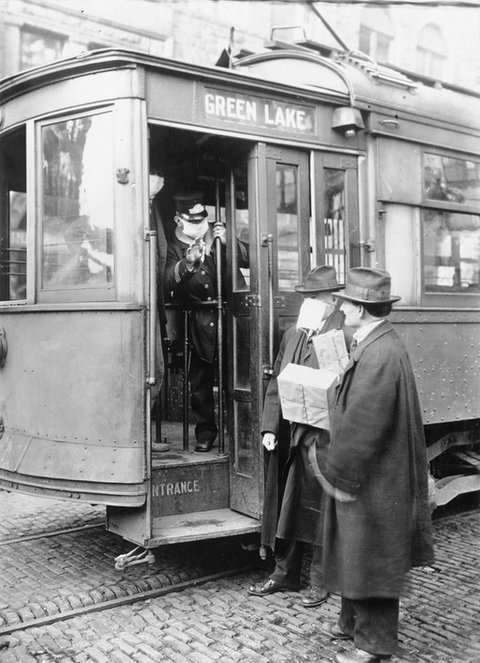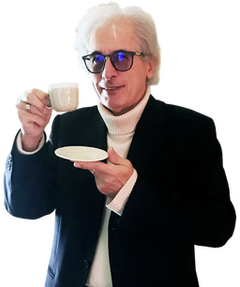The surgical mask: a story that begins from afar
I was in Japan for work many years ago - my first time in that country – and I recall my surprise in seeing many people wearing sanitary masks as they walked the streets. Apparently, the custom of wearing protective masks started in Japan during a terrible flu epidemic in 1934, to be then adopted also by nearby countries in the 1950s. Since then, wearing a mask in Japan when you have a minor ailment, such as the common cold, is seen as a sign of respect and courtesy, a show of civic sense towards others. The care and respect the Japanese show for others reminds me of the time I made a fool of myself in Japan. Getting out of the airport, I had got in a taxi that had white cotton seat covers and whose driver was also wearing white cotton gloves. As I entered the cab, I pulled the door with my hand to close it, a gesture which made the driver frown badly at me. Hygiene standards in Japan dictated that it was the driver, who wore protective gloves, that was supposed to lean onto the back seats and pull the door to close it, certainly not me with my filthy hands! In more recent years, I have often seen groups of Asian holidaymakers walking in Milan while wearing face coverings. Unfortunately, today, the brutality of the news on the pandemic has made all of us dramatically familiar with wearing masks, which have actually become an essential part of our daily lives.
But when were sanitary masks invented?
In our culture, the term mask has always been associated with social, light-hearted events, like carnival festivals. Amongst the most famous carnival masks are the Venetian ones, with Venice also being the place where a first rudimentary medical mask was first used in the Renaissance period. Masks have a long history, that goes back as far as prehistory. Masks have been used by all ancient populations, in religious practice, in rituals, both official and unofficial (some hypotheses seem to suggest that the term "mask" comes from the world of witchcraft), for artistic use as a means of communication, as well as a voice amplifier first in Greek and then in Roman theatres. In our times, carnival masks are a fine example of leisure time masks and, perhaps, also a means to anonymously experience licentious situations – with Halloween, in the USA, maybe being a mixture of all of this. Wearing a mask can also take a totally different meaning, such as in psychology, where it means to show ourselves through an image that is different from our true being.
Coming to the protective function masks can have, surgical masks certainly fall into the category of protection gear. Wearing a mask for protection started a few centuries ago and, as often happens, it is the situation that creates the opportunity. Let's go back to Venice for a moment. Already in the Renaissance period, when epidemics occurred, people covered the face with a cloth to protect from the miasma - putrid air - that was thought to carry and spread the disease. The first medical masks were invented in Venice during the plague epidemics (1575, 1630). Antique prints and paintings show us the peculiar medical gear of the “plague doctor”, which probably left patients more scared than the plague symptoms. These doctors went to visit their patients in protective clothing that consisted of a long, beak-like mask (with herbs and spices held under the mask to disinfect and also neutralise the bad miasma smell with their pleasant scent) with glass lenses to cover the eyes, a waxed fabric overcoat, elbow-high gloves and a cane – certainly a terrifying sight for the patients which probably made them even more sick. We would have to wait many more years before getting to the masks we use today, based on the concept that proper hygiene is key to preventing the spread of infection. Speaking of cleanliness, it has taken a long time for hospitals to reach the very high hygiene standards we have today.
In the history of hygiene, Ignác Fülöp Semmelweis (1818-1865), a Hungarian physician, is known as the saviour of mothers. He realised that the infections that killed so many mothers in the Obstetrical Clinic in Vienna where he was working were easily spread during visits from one patient to another. In addition, patient examinations were often performed by doctors after autopsy operations on cadavers. It was 1847 and Semmelweis and his group of doctors began to disinfect their hands between visits, a procedure we still follow today. Semmelweis's observations conflicted with the established scientific and medical opinions at that time and his ideas were rejected by the medical community (Semmelweiss ended up in an asylum and suffered of a nervous breakdown) – it would take many more years before his intuition would become common practice to ensure proper hygiene, thus help to save lives. Like Semmelweis, another physician had an important empirical intuition. By discovering the causative agent of TB in 1882, Robert Koch (1843–1910) demonstrated that germs are the cause of infectious diseases. Later, Carl Flügge (1847–1923) proved that just normal conversation is sufficient for spreading bacteria-containing droplets into the air from the nose and mouth – a finding that was a revelation to all surgeons working in operating rooms. Following Flügge work, an Austrian surgeon, in 1897, Johan von Mikulicz Radecki, designed for the first time a mask consisting in a layer of gauze to be used during surgery. The French surgeon Paul Berger, in 1897, after thoroughly investigating on the subject, began to wear "a rectangular compress of six layers of gauze, sewn at its lower edge to his sterilized linen apron and the upper border held against the root of the nose by strings tied behind the neck” – the surgical mask was finally invented. Latex gloves followed in 1899 thanks to William Halsted (1852–1922) and his research work at the Johns Hopkins Hospital in Baltimore.
In the following years, mask design advanced and yielded the so-called filter masks (known as FFP masks) which, vice versa, protect the healthy from the sick.

Street car conductor in Seattle not allowing passengers aboard without a mask, during Spanish Flu Pandemic in 1918.
A giant leap in mask design came from a Chinese doctor, who had studied at Cambridge. In Manchuria, Northern China, an epidemic had broken out in 1910, with a mortality rate of 100% of those infected. Dr. Lien-teh Wu was called in by the authorities and, through a number of autopsies, he realised that infection spread through air, not through fleas. Based on his experience on face masks he had seen in the West, he then developed a much more rigid mask of gauze and cotton with further layers of fabric to filter inhaled air, to be firmly fixed to the face. The new mask was quickly adopted by the medical community and produced in large amounts to be distributed to everyone. Dr. Wu’s new mask stood as a revolutionary turning point in the fight against that Chinese epidemic. His mask is known today as the N95 mask, developed by 3M, but it should probably be called the “Dr. Wu mask".
I would like to conclude this article with a thought on China. As we know, the pandemic that is causing so much trouble today all over the world originated from China, which remains the great country it has always been, despite certain all-to-easy allegations. Do not forget that many Chinese doctors and healthcare professionals have paid with their lives for their hard work looking after Covid-19 patients in hospitals.
History cannot be made through allegations. Facts make history and they tell us that "good" science has no borders, and never will.
Therefore, we are grateful to all the people, known and unknown, who strive all the time to remove the mask of invincibility from the scourges that afflict humanity.
Giulio Fezzardini
TKS Publisher
Italy






